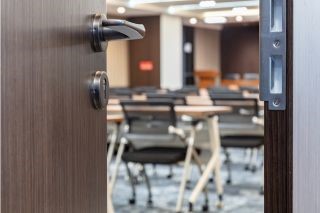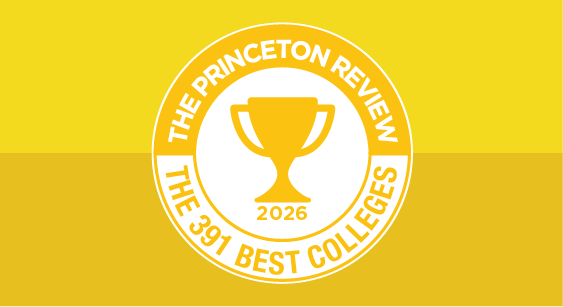
As the world becomes increasingly digital, so too does the SAT. The College Board now offers a Digital SAT, which must be taken on a computer or tablet using the Bluebook Testing App (unless you have accommodations otherwise; more on this below). For students who require accommodations, it's important to understand the options available for the Digital SAT.
Who is eligible for accommodations?
According to the College Board, accommodations are available for students with documented disabilities or medical conditions. These accommodations are intended to level the playing field and ensure that all students have an equal opportunity to succeed on the SAT. Generally speaking, students who receive accommodations for school are often also eligible for accommodations on the SAT, though the details of those accommodations may differ between school and the SAT.
Types of accommodations available for the Digital SAT
Types of accommodations available for the Digital SAT
The types of accommodations available for the Digital SAT are similar to those available for the paper-based test. The specific accommodations available to each student will depend on their individual needs and the documentation provided to the College Board. Some examples of possible accommodations include:
- Extended time
- Additional and/or extended breaks
- Large-print
- Assistive technology
The change to a computer-based test has allowed the College Board to change their implementations of some of these accommodations. For instance, the Bluebook software is designed to be compatible with all major screen readers and Braille technology. All students (not just those with accommodations) can change the size of the writing on the screen. If needed, a student may receive access to a larger monitor to allow for sufficiently large writing.
Furthermore, students who are unable to use screens at all may request access to a pencil-and-paper version of the Digital SAT. This version of the test is longer (as it is not computer-adaptive), but all questions on the pencil-and-paper Digital SAT match the formatting and style of this test.
Navigating the Accommodation Application Process
Applying for accommodations for the Digital SAT can be a complex process. Because most students who receive accommodations from the College Board also receive accommodations at school, The Princeton Review recommends that you involve your accommodations officers at school early in the process. Here are some additional tips to help you navigate the process successfully.
How to request accommodations for the Digital SAT
To request accommodations for the Digital SAT, students must submit an application to the College Board. This application should include documentation of the student's disability or medical condition, as well as a description of the requested accommodations. The application can be submitted online through the College Board's website.
Required documentation for accommodation requests
The documentation required for accommodation requests will vary depending on the nature of the student's disability or medical condition. In general, the College Board requires documentation from a qualified professional, such as a doctor or psychologist. This documentation should include a diagnosis of the disability or medical condition, as well as a description of how the disability or medical condition affects the student's ability to take the SAT.
Timeline for accommodation requests
It's important to note that accommodation requests can take several weeks to process. Students should submit their requests as early as possible to ensure that they have enough time to prepare for the test. Once accommodations are approved by the College Board, they will apply to any PSAT, SAT, or AP Exam that student takes, so The Princeton Review recommends applying as early as possible.
Tips for Preparing for the Digital SAT with Accommodations
Preparing for the Digital SAT with accommodations requires some additional planning. Here are some tips to help you succeed on test day.
Strategies for managing test day with accommodations
On test day, it's important to arrive early and familiarize yourself with the testing environment. If you're using assistive technology, make sure you're comfortable with the equipment and that it's functioning properly. Take advantage of breaks and pacing tools to help manage your time effectively.
Common mistakes to avoid when taking the Digital SAT with accommodations
- Not practicing with the accommodations ahead of time: it's important to become familiar with the accommodations you'll be using before test day. The Bluebook application that you’ll use on the day of the Digital SAT is also available to use for practice tests and sections. Download this app on the device you’ll use on the day of the test and practice using any supportive software that you’ll use on the day of the test.
- Not communicating with the test administrator about your accommodations: Make sure you're clear about what accommodations you'll be using and how they should be implemented. It is helpful to bring any documentation of the accommodations approved by the College Board, in addition to ensuring that the Bluebook application also implements these accommodations during your practice tests.
- Not taking advantage of breaks: It is important to get up, walk around, and eat, drink, or use the bathroom as you need. Do not feel pressured to push through and skip breaks or finish sections early. Use the time allotted to you, so you can demonstrate your abilities to their fullest.
Frequently Asked Questions about Accommodations for the Digital SAT
Here are some answers to common questions about accommodations for the Digital SAT.
What if my accommodation request is denied?
When a request for accommodations faces denial or partial approval from the College Board, it's crucial to understand the reasons behind these outcomes. Most denials fall into two primary categories.
-
1. More Information Needed: If you receive a decision letter requesting more information, it's essential to collaborate with your school, family, and doctor to collect and submit the required documentation following College Board guidelines. Remember that the approval process cannot commence until all necessary documentation is received.
-
2. Documentation Does Not Support the Requested Accommodation: If your documentation fails to support some or all of the requested accommodations, your decision letter will elucidate why certain accommodations were not granted. In such cases, if you wish to resubmit your request, you may need to provide different or additional documentation following College Board guidelines. It's important to note that merely requesting a different accommodation without substantial additional information is unlikely to result in an immediate approval. For instance, asking for reduced extended time without appropriate supplementary documentation is unlikely to alter the College Board's decision.
Can accommodations change my test score?
No, accommodations are intended to level the playing field, not to give students an advantage. The College Board has measures in place to ensure that accommodations do not affect test scores.
Making the Most of Accommodations for the Digital SAT
If you receive a decision letter requesting more information, it's essential to collaborate with your school, family, and doctor to collect and submit the required documentation following College Board guidelines. Remember that the approval process cannot commence until all necessary documentation is received.
Read More
Explore Colleges For You
Connect with our featured colleges to find schools that both match your interests and are looking for students like you.
Get Started on Athletic Scholarships & Recruiting!
Join athletes who were discovered, recruited & often received scholarships after connecting with NCSA's 42,000 strong network of coaches.
Best 391 Colleges
170,000 students rate everything from their professors to their campus social scene.



